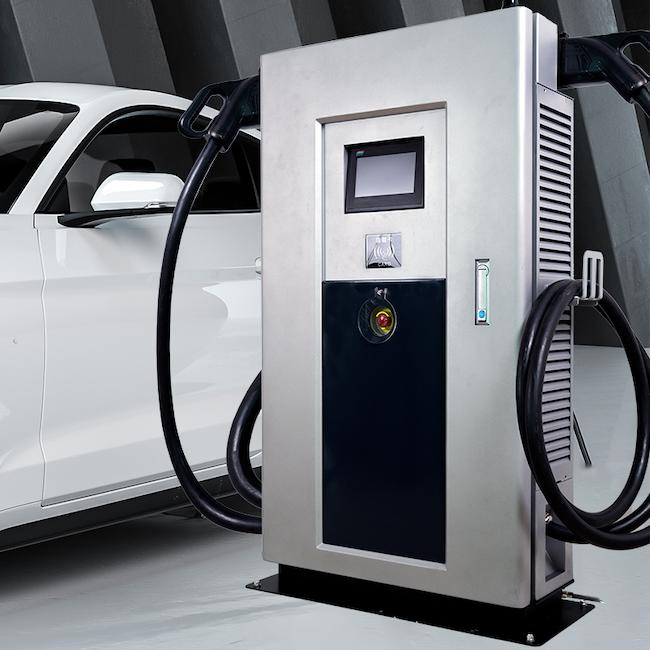The principle of vehicle charging is: the conversion process of charging equipment needs to negotiate with the battery management system (BMS) on the electric vehicle to complete the charging with appropriate voltage and current. In the charging process, the charging current will decrease with the charging process. In the initial stage, it can be charged faster with large current and slower with small current in the later stage.
Charging pile is divided into AC charging pile and DC charging pile. AC charging pile is applicable to electric vehicles with on-board charger. The working power supply is single-phase AC220V 50Hz or three-phase AC380V 50Hz, and the corresponding power is 7KW or 21kw. There are mainly two forms: wall mounted and floor mounted, with small floor area and convenient installation. DC charging pile is applicable to electric vehicles without on-board charger. The working power supply is 380 ± 10%, 50-60Hz, and the corresponding power is 36kw (passenger car) or 170KW (commercial vehicle). With constant voltage charging, constant current charging, intelligent charging and other ways. The main form is charging and replacement power station, in which the mobile charging station covers a small area, is movable, flexible and convenient.
The control circuit of electric vehicle charging pile is mainly completed by embedded ARM processor. Users can swipe their card for user authentication, balance query, billing query and other functions. They can also provide voice output interface to realize voice interaction. The user can select four charging modes according to the instructions of the LCD: charging on time, charging according to electricity, automatic charging, charging according to mileage, etc.
